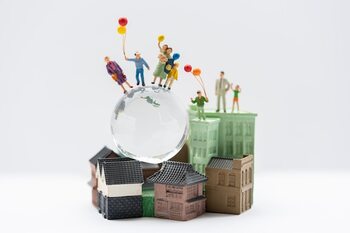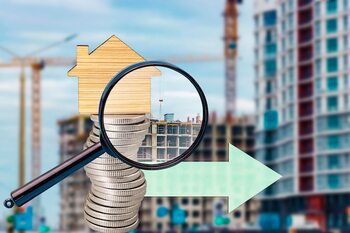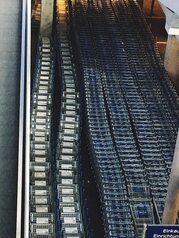The role of environmental trends in real estate appreciation

The role of environmental trends in real estate appreciation is a crucial topic in the current market landscape. As environmental awareness grows, buyers are seeking properties that not only offer comfort and style but are also sustainable and environmentally friendly. In this article, we will explore how these trends are redefining property appreciation and their impact on location. Get ready to discover why investing in eco-friendly real estate can be a smart and responsible financial decision.
1. The evolution of environmental awareness in the real estate market
The evolution of environmental awareness in the real estate market has been a gradual but significant process. In recent decades, consumers have shifted from solely prioritizing the aesthetic and functional aspects of a property to considering its ecological footprint. This paradigm shift has been driven by increased awareness of climate change, the scarcity of natural resources, and the need for sustainable practices. Today's buyers not only seek comfortable and well-located homes, but they are also interested in features such as energy efficiency, the use of recyclable materials, and environmental certifications that ensure a lower impact on the environment.
This greater environmental awareness has led developers and investors to adapt to market demands. Properties that incorporate clean technologies, renewable energy systems, and sustainability-oriented architectural designs are beginning to stand out in an increasingly competitive sector. Furthermore, these features not only improve the quality of the urban environment but also add long-term value to real estate investments. Thus, by considering economic, social, and environmental aspects, the real estate market is evolving towards a more holistic vision that benefits both owners and the planet.
2. How do green certifications influence the value of a property?
Green certifications, such as LEED (Leadership in Energy and Environmental Design) and BREEAM (Building Research Establishment Environmental Assessment Method), are gaining relevance in the real estate market. These accreditations not only validate the sustainable features of a property but also serve as a quality seal that can increase its appeal to potential buyers. Certified properties tend to offer lower operating costs due to their energy efficiency, resulting in long-term savings for owners. This energy saving and the promise of a healthier environment are key factors influencing the purchasing decision and can justify a higher price compared to similar properties without certification.
Additionally, the growing demand for eco-friendly housing has led many investors and developers to prioritize environmental features in their projects. A property with green certification not only stands out in the market for its sustainable attributes, but it also tends to have better value retention. In times when social awareness is increasingly present among consumers, having a property that meets ecological standards can be a significant differentiator. Thus, green certifications not only add immediate value to the property from an aesthetic and functional perspective, but they also ensure continuous appreciation in an increasingly competitive and environmentally conscious market.
3. The importance of green areas in real estate valuation
Green areas play a fundamental role in real estate valuation, as they not only improve the aesthetics of urban environments but also provide tangible benefits to the quality of life of their inhabitants. The presence of parks, gardens, and natural spaces within or near a property can increase its appeal and, therefore, its market value. Today's buyers increasingly seek properties that offer a balance between urbanization and nature, making green areas a decisive factor when making an investment. Furthermore, green areas contribute to improving environmental sustainability by promoting biodiversity and reducing the "urban heat island" effect in cities. These features not only benefit immediate residents but also elevate the value of the neighborhood as a whole. An environment with abundant green spaces tends to attract families and professionals who prioritize a healthy and active lifestyle, which directly impacts real estate demand. Therefore, investing in properties located near green areas translates not only into benefits for the environment but also into greater long-term appreciation.
4. Renewable energy: an additional attraction for buyers
Renewable energy is gaining ground in the real estate market, offering an added appeal for both buyers and investors. Properties equipped with sustainable technologies, such as solar panels, geothermal heating systems, and residential wind turbines, not only contribute to reducing the carbon footprint but also generate significant savings on utility bills. This approach to energy self-sufficiency has become an added value that can notably increase a property's appreciation, making it a more desirable option compared to others that lack these eco-friendly features. Furthermore, the use of renewable energy aligns with current trends of responsible consumption and sustainable living. Buyers are increasingly aware of the environmental impact of their housing choices and seek properties that reflect their personal values. Therefore, having facilities that utilize clean energy sources is not only economically attractive but also emotionally appealing. These types of properties position themselves as leaders in the market by meeting the growing demand for greener and more efficient housing solutions, which can translate into a significant increase in their long-term valuation.
5. Sustainable community spaces: a new standard in urban development
Sustainable community spaces are becoming a new standard in urban development, transforming the way cities and communities are designed and interact. These spaces not only foster a sense of belonging among residents but also incorporate ecological elements such as community gardens, green areas, and rainwater harvesting systems. By integrating nature into urban environments, a higher quality of life is promoted, which in turn increases the demand for properties near these spaces. Developers are recognizing this trend and are beginning to include these elements in their projects to attract buyers who value both sustainability and community well-being. Moreover, sustainable community spaces also play a crucial role in creating resilient local economies. By providing places where residents can gather, exchange ideas, and participate in joint activities, social networks are strengthened, and local trade is stimulated. This not only contributes to the economic development of the area but also increases property value by making properties more attractive to those looking to live in vibrant and collaborative environments. Investing in areas with these initiatives can be a smart strategy for those wishing to maximize their return on investment while supporting environmentally responsible practices.
6. Trends in eco-efficient construction and their effect on added value
Eco-efficient construction trends are revolutionizing the way properties are designed and built, integrating sustainable practices that not only benefit the environment but also increase property value. Elements such as the use of recycled materials, renewable energy systems, and smart technologies for water and energy management are becoming increasingly common in real estate projects. These innovations not only reduce a property's environmental footprint but also attract a growing segment of conscious buyers who prioritize eco-friendly features in their purchasing decisions. As these practices become standard in the market, properties built with eco-efficient criteria tend to experience a significant increase in their value.
Additionally, the implementation of environmental certifications such as LEED or BREEAM adds tangible value to properties. These certifications not only serve as proof of commitment to sustainability but also build trust among potential buyers and investors. The positive perception associated with green buildings can translate into higher demand and, consequently, continuous appreciation of the price of these properties. In a world where consumers are increasingly informed and aligned with sustainable values, opting for eco-efficient properties becomes a smart strategy to maximize long-term profitability while contributing to the well-being of the planet.
7. The impact of sustainable transportation on the location and value of properties
Sustainable transportation has become a determining factor in property valuation. As cities seek to reduce their carbon footprint, the implementation of bike infrastructures, efficient public transportation systems, and pedestrian zones is changing the way buyers evaluate a location. Properties located near metro stations or electric bus stops are not only perceived as more accessible but also as more attractive from an ecological standpoint, which can increase their long-term value. This shift in transportation perception leads many to prioritize areas with sustainable options when searching for their new home.
Moreover, the impact of sustainable transportation extends beyond the immediate value of a property; it also influences urban development and the quality of life of its residents. Well-connected communities tend to foster a more active and healthy lifestyle, where walking or biking become viable alternatives to car use. This not only enhances resident satisfaction but also promotes a sense of community and social cohesion. Investing in strategically located properties within these areas can be beneficial for both owners and investors, as trends toward a more sustainable environment continue to gain momentum and are increasingly valued by future buyers.
8. Eco-friendly urban development projects: a safe investment?
Eco-friendly urban projects are consolidating as an attractive and safe investment option for modern buyers. These developments not only prioritize sustainability but also incorporate elements that enhance the quality of life for their residents, such as green spaces, energy efficiency, and accessibility to public transportation. By opting for properties in these environments, investors are not only contributing to a more sustainable future but may also benefit from the increased demand for homes that meet ecological standards. This trend can translate into significant appreciation over time, as more people seek to live in communities that reflect their environmental values.
Additionally, sustainable urban development projects tend to be supported by favorable government policies and subsidies aimed at promoting eco-friendly developments. This means that investments made in these areas are not only profitable from an economic standpoint but also backed by a regulatory framework that encourages their growth. The combination of increasing demand and institutional support creates a conducive environment for the appreciation of these properties. Thus, when considering investing in real estate within these environmentally friendly urban development projects, buyers are making a strategic choice for both their personal well-being and their future financial health.
9. Future of the real estate market: adapting to environmental demands
The future of the real estate market is shaping up as a scenario where sustainability and respect for the environment are essential elements in decision-making. Developers and builders are increasingly aware that eco-friendly properties not only comply with environmental regulations but also meet the expectations of modern consumers. These demands include everything from the use of recycled materials to the implementation of energy-efficient technologies, contributing to a reduction in carbon footprint. Adapting to these trends not only benefits the environment but can also significantly increase the value of properties, making them attractive investments for buyers concerned about the future of the planet. As this transformation towards a more sustainable real estate market progresses, new regulations and standards are likely to emerge that will further promote eco-efficient construction. Cities are beginning to prioritize projects that integrate green spaces and innovative solutions for water and waste management, creating more pleasant and livable urban environments. Furthermore, the growing demand for sustainable housing could lead to a revaluation of previously undervalued areas, which would positively impact their value. In this context, adapting to environmental demands is not only a social responsibility but also a smart strategy for any investor or owner looking to maximize the value of their real estate assets.



